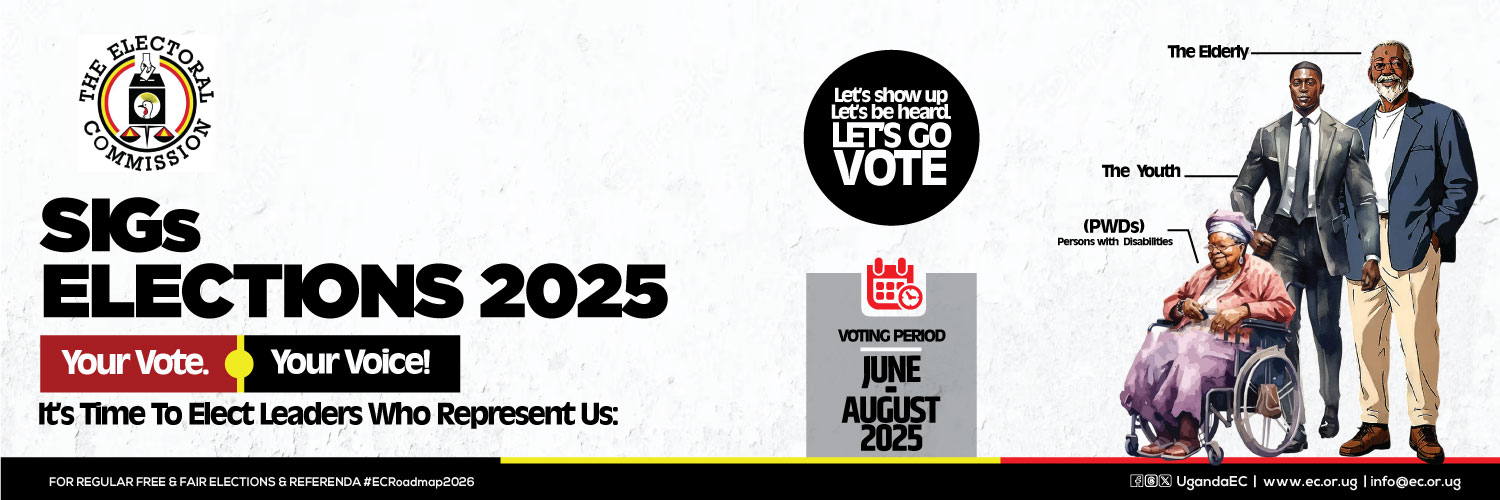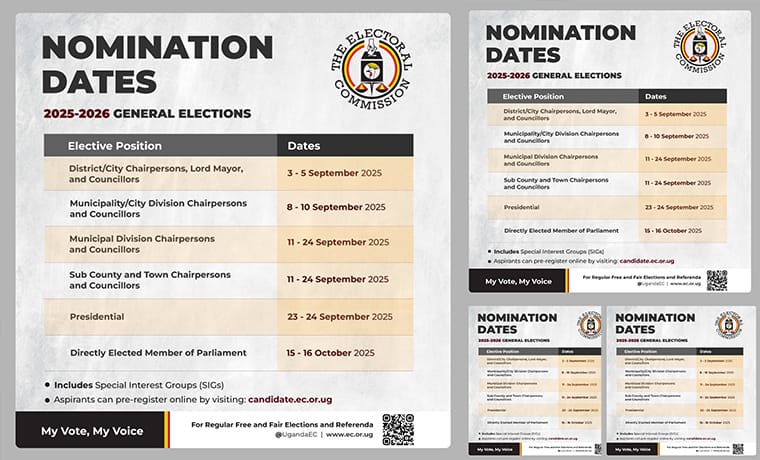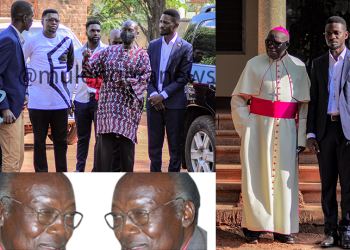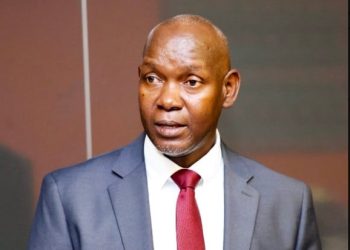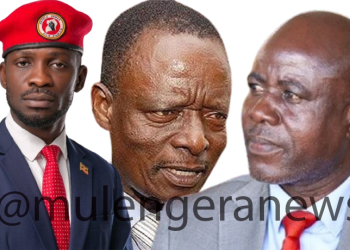By Otim Nape
In his March letter, President Museveni made a case against UMEME directing in very unambiguous terms that its concession agreement shouldn’t be renewed beyond 2025 when it will be expiring.
In the subsequent meetings with concerned officials, Museveni has since disclosed how he is so much disappointed with UMEME and is cancelling the SGR project to be able to find $400m (UMEME says $1.6bn) invest in the distribution network which he considers to be UMEME’s biggest failing. Investing in the distribution network means purchasing/establishing more to ensure that the distance between one transformer to another is diminished from the current 7kms to 1km. This requires establishing more sub stations, electricity poles, electricity wires and transformers onto the district network [Mwenda says UMEME inherited 5,000 transformers but has grown the number to 13,000]. Revamping the distribution network has a direct impact on electricity affordability by end users because it will reduce the tariff. Ideally UMEME had the obligation to sufficiently invest in the network to diminish technical losses (resulting from a poorly maintained network) but relaxed following the November 2006 amendment to the concessional agreement. The amendment permitted to transfer all the expenses resulting from commercial and technical losses onto the final consumer by making it part of the tariff. Consequently as per now, 44% of whatever an end user pays is the contribution to the UMEME expenses resulting from technical losses which are supposed to be mitigated by UMEME investing in the network. This hasn’t happened because the November 2006 amendment by the committee of eminent persons (GoU’s Erias Kiyemba, Kabagambe Kalisa, David Sebabi & UMEME’s Sam Zzimbe, Paul Moore and Luka Buljan) shielded them from this obligation. As Museveni has since realized, this amendment was controversial majorly for two reasons. One it breached S15 & 17 of Electricity Act which makes regulator ERA the only agency than can alter the original agreement and secondly for the absence of the Solicitor General’s approval. Consequently Eng Frank Sebowa, who was ERA ED patriotically protested this alternation and lost his job. As a result the tariff the end user pays increased by 44% reflective of the costs resulting from technical losses which UMEME was to eliminate by investing in the network under the original agreement.

THE DANGER
In a bid to rectify this problematic situation, while moving against UMEME, Museveni might end up creating more problems than solved. Whereas industry watchers say the best easiest remedy to the situation is to do away with the November 2006 amendment and return to the old status quo, Museveni doesn’t seem to consider that practical at all. His view is for the government to own up to the mess while ensuring UMEME’s concession isn’t extended beyond 2025. This is leading him to almost extremist positions including halting the Standard Gauge Railway (SGR) project. Reliable State House sources say the halting of the SGR to overcome the sometimes very exploitative Chinese is something that was impressed on Museveni by Tanzanian leader JP Magufuli who has been kicking the Chinese out of the infrastructural projects citing indulgence in unethical practices. With Kenyans diverting to Kisumu as opposed to extending their SGR line to Malaba, the project becomes even more expensive for Uganda than the original $2.9bn earmarked for the same. Yet even at $8.2m/km, Uganda’s SGR was already being considered too expensive compared to Kenya’s $7.7m/km. Museveni eloquently argues that it’s futile to invest so much in the SGR when, because of absence of affordable electricity, the processed goods supposed to be exported on that line are not in place. This is why he has decided to suspend the SGR project and invest in the power distribution network first to ensure the tariff comes to enhance industrial production. This looks okay but the problem is going to become stuck with excess electricity of 1097MWs that is going to become available effective October 2018 when Isimba’s 180MWs and Karuma’s 600MWs come onto the grid. Whereas we currently have generation capacity of 897.8MWs (against an effective demand of less than 600MWs), the two new dam will bring the total installed generation capacity to 1995MWs by 2020. Given our limited demand for this power, many have been questioning whether the trillions invested in these two new dams was money well spent. The hope has always been that the SGR, which is supposed to 100% operate an electric system, would productively consume this additional electricity coming onto the grid. Putting the SGR off creates a fresh new economic problem that could possibly diminish the breathing political space for Museveni. The second aspect, that makes putting off SGR a huge contradiction and potential source of weakness for Museveni, relates to the cost of doing business in Uganda. Guys tasked with marketing Uganda to attract foreign investors have been leveraging on the promise of the upcoming SGR to woo investors here more easily. Now putting off the SGR project, in order to own up and make good the mess created by UMEME’s inefficiencies, is going to disarm such investment ambassadors of what has been a major talking point (SGR) in their presentations to potential investors they have been approaching.

ANGERING CHINA;
The other aspect making putting the SGR off more complicated relates to the way the Chinese will react to the possibility of their China Harbor Engineering Company (CHEC) losing out of the $2.9bn/273km (169 miles) railway line project. Because they don’t meddle in governance issues (giving democracy lectures in the M7 speak), the Chinese have been very reliable diplomatic and economic allies for Uganda and losing them would leave our leader more vulnerable especially at the UN where the Chinese diplomatic support has always been a given just like that of the Russians. This halting of the SGR might complicate the diplomatic relations between Beijing and Kampala which naturally will be very bad news for our man Museveni. In an interview with this news website, an influential Museveni advisor on economy anonymous reflected on the possible way out. “One is to incite Parliament to make very serious demands insisting on the review of the loan terms for the $2.9bn the Chinese are lending us to finance the SGR or we deliberately violate the terms and on their own pull out of the funding agreement,” said the influential Museveni advisor based at the finance ministry. He added that whereas it might politically embarrass the NRM, calling off the SGR would prudently make a lot of economic sense. “Yes it’s a good prestigious infrastructure public works project for the country to undertake because it enhances our President’s big man credentials in the region and on the international scene but there is a cheaper way to achieve the same result which is reducing the transportation-related costs of doing business in Uganda,” the official explained. “We must find the $500m and quickly invest into the Bukasa Port project and counter the Kenyan move of diverting the SGR from the Malaba direction to Kisumu on Lake Victoria. That option of the water transport is 40% cheaper than the SGR and it works perfectly well. Why should we be punished to spend our own meager resources funding the SGR extension into Kenya, DRC and even Rwanda to link to Katuna when we can have a plan B? It’s not worth it and my prayer is that my boss sees sense in this argument and we prioritize Bukasa to avoid that Chinese loan that is going to enslave our children for generations to come.”
MORE CHINESE FURY:
We are impeccably informed that besides the impending SGR row, there are many more areas of uneasiness among our Chinese partners. Just at the start of February 2018, the China Exim Bank fired close to 10 senior officials who were involved in negotiating funding for both Karuma (done by Syno-Hydro at $1.7bn) and Isimba (done by China Water at $500m). The Exim Bank management accused the officials of failing in the due diligence when negotiating especially the loan repayment terms. The bank top executives were infuriated to realize that the obligation to repay the loans wasn’t directly resting on the Ugandan consolidated fund but on funds mobilizable from the tariffs paid by the power consumers. We are told the Exim bank officials were unhappy that it wasn’t pegged on the consolidated fund. They felt Uganda outsmarted them and the bank representatives had to be sanctioned and the knifing was effected on 1st February 2018. “Isimba [180MWs] is to be commissioned in October 2018 but don’t be surprised if the Chinese make fresh demands on the Karuma funding whereby if their demands aren’t accepted, the project might even stall,” said a knowledgeable source close to the GoU negotiations pertaining to the two newest power dams. It will be recalled China Water was given Isimba as a tradeoff for them to give up on the anti-Syno Hydro litigation they had commenced in the East African Court of Justice disputing the circumstances under which politicians influenced the final award in favor of Syno-Hydro. “Yes it was resolved but this foot-dragging by the IGG overstepping her powers to drag the procurement process for so long also infuriated Exim bank and made the top officials in Beijing very frustrated about financing such mega power projects in Uganda,” the source explained in a bid to show more justification or cause for the quietly emerging uneasiness by the Chinese towards the GoU.
ISIMBA/KARUMA/TARIFFS;
What must even be more frustrating is the revelation that the coming onto the grid of Isimba parse won’t bring down the tariff. Instead it will technically result into an increase of 18% on the tariff unless UMEME is cajoled not to exercise their right in the concession agreement that allows them to increase the tariff for every additional MW that comes onto the grid. “That [increasing the tariff further] will be politically disastrous for Museveni meaning he can’t allow those UMEME guys to increase the tariff simply because Isimba has come onto the grid yet they have that right under the agreement to do so. The best the big man can do is to talk to them-only and only otherwise they have him and it’s politically going to cost him a lot,” explained a source who happens to be a lawyer with a bias on energy matters.
In support of the President’s option to halt SGR and wholly concentrate on the power sector first, the same lawyer explained: “It’s really a catch 22 situation because whereas lowering the tariff is very desirable for all of us if we are to increase effective demand for power [and increase from the 12,000 connections we currently have], you are going to have load shedding the moment you lower the tariff. Many more consumers are going to come on and the result will be load shedding similar or even worse than what we had in 2005 whereby UMEME would even put a newspaper notice showcasing the load shedding schedule for the day. That politically will be more discrediting to the president than having the tariff increased. This is why he really needs time to sufficiently concentrate on this electricity dilemma as we work towards getting UMEME out of the equation by 2025.” It’s really important that Museveni addresses the tariff issue if economic development goals (including the middle income status) are to be realized. This is so because you need affordable (effective demand) electricity supply for the country to sufficiently industrialize, export processed products and bring in the dollars to boost its foreign exchange. Yet for that ideal to be achieved, the tariff must come down because, as the World Bank indicated in a report sometime back, every 1% reduction in tariff instantly increases effective demand for electricity by 2.7% and vice versa. To sustainably achieve this ideal, Museveni rightly needs time and concentration to sufficiently monitor/supervise implementation by energy ministry officials that have sometimes been very slippery and selfish-always looking out for personal gain. This according to the lawyer, who anonymously spoke to us, makes justifiable the decision to halt the SGR project so that the president’s capacity to supervise isn’t overstretched. The counsel further explains that to industrialize this country in a manner Museveni wants, reliance must initially be placed on cottage industries and heavy industries later. Museveni believes this sort of intervention is urgently necessary because, whereas top earning finance ministry economists (aided by pundits like Andrew Mwenda) have continuously painted a very rosy picture, our economy is actually shrinking and the responsibility to reverse that trend lies more with the President than anyone else. This is why on the UMEME issue, the president has so far contemptuously ignored two powerful UMEME board members who have been carrying a very talkative veteran journalist to belittle one of the Museveni advisors as a drunkard. The man from Rwakitura, sources say, has insisted he has seen something many of the governing elites haven’t yet seen. He is seeing serious economic problems which must be mitigated and now-not next year. The very knowledgeable lawyer also rationalized the pressure under which GoU might have acted in 2005 when consenting to such a very unfair agreement with UMEME; two years earlier in 2003, the British government had imposed a difficult HIPIC-related condition on Uganda. We badly wanted debt relief and the British imposed a condition that to support our bid for that debt relief, ACTIS international (the financial arm of the UK) had to get the electricity deal (along with Eskom). They clearly looked at business interests because, up to until late 2016, financial analysts say the money trails would clearly show that every month billions of dollars would be repatriated back to the UK where a significant fraction of the country’s National Health System was funded on proceeds from the UMEME deal that majority Ugandans would like to see terminated soonest. “Let me tell you quite frankly, that Erias Kiyemba’s UETCL was nothing but a forex bureau for UMEME. What happened was that speculators on the forex market in Kampala would make a killing between 29th and 5th of every month because that is when the UMEME money was being converted to dollars for repatriation in the UK. That’s the week when dividends are being paid out/sent to the UK. And if that UMEME repatriation was halted today, the exchange rate in Kampala will instantly fall by 1,800 instantly because those guys are exporting our dollars too much; worse than the MTN does to South Africa.”
SIDE BAR INFO:
The following related information may be enriching for those who desire to know much more: As of 2004, the GoU gave in to pressure from the UK government and agreed to give a power distribution concession to ACTIS Capital which is the investment/financial arm of the UK Commonwealth Development Corporation (along with Eskom). Lasting for 20 years, the contract expires in 2025. Right from day one, it has always been dismissed by critics as a very unfair contract for GoU. Gerald Sendawula, now an influential UMEME Board member, was the Finance Minister as of 2004 when UMEME/Actis first got the deal. Indeed he signed on behalf of the GoU and Irene Muloni (who later replaced deal critic Hillary Onek as Energy Minister) was the MD UEDCL and signed as such in 2004. David Grills was MD and signed for UMEME. In November 2006, there came the committee of 6 eminent persons (both GoU & UMEME reps) who sat and altered the original agreement introducing in clauses that greatly favored UMEME and disfavored the GoU. Many believe that these alterations (that were subsequently in 2006 ratified by Ezra Suruma who replaced Sendawula) are the genesis of the exploitative tariff regime that has made UMEME arguably the most hated entity in Uganda today. This new position was signed onto by CFO Ian Williams and Paul Mare who had become UMEME new CEO. At Energy, Onek who was minister made some noise saying the deal was very unfair but he was overlooked and eventually replaced by Muloni. Simply, UMEME was obliged to invest in, rehabilitate and expand the distribution network besides increasing connections (they have moved from 2005’s 290,000 to today’s 1.2m). However, UMEME’s refusal to effect the anticipated reforms is the reason technical losses have remained high hence burdening the consumer who under the altered concession has the burden to pay for technical losses; it’s reflected on the end user tariff. In his 12th March letter, Museveni is rightly angry that despite UMEME claim to have invested $500m in the network in the last 12 years, the technical losses (now at 17%) haven’t come down, something he wants Muloni as sector political leader to explain. Ex-energy minister Richard Kaijuka says the Museveni letter was long overdue and is of the view that the officials who committed Uganda to such a deal should be prosecuted. Indeed Museveni has directed the IGG to investigate the whole thing. Museveni is also disturbed by the circumstances under which NSSF was stampeded to buy 23% shareholding (becoming the biggest owner) after Actis divested itself and totally exited as of 2016. The biggest concern is that the politically powerful actors back then pushed the NSSF BOD Chairman to go into UMEME without BOD and Solicitor General approval. So generous is the concession agreement to UMEME that even today, in case GoU elects to end the contract protesting its (UMEME) breaches, the entity will still be entitled to a payout equaling 90% of all they have invested in the network. Because power availability is a political matter, President Museveni has become impatient and wants UMEME out at earliest opportunity. Should he decide to kick them out today (for that would politically be a very popular move as his 12th March letter has showed), GoU will have to pay them Shs10trn as compensation for their investment so far. What makes it even worse is the fact that under the agreement, regulator ERA isn’t authorized to verify whatever figure they claim to have invested. ERA’s role is to just accept the figure as stated! Even if the contract halted because of breaches by UMEME, GoU still compensates them Shs4.4trn. Even if the contract became frustrated by Force Majeure (circumstances beyond either party’s control), still UMEME must be compensated 90% of whatever it will have invested since 2005. And any delayed delivery of the agreed payout money will, after 91 days, attract 20% interest in favor of UMEME. This strong position in which the agreement places UMEME could be the reason why President Museveni has been cautious since his letter leaked-holding long meetings with UMEME top officials led by Sendawula and Patrick Bitature. As of 2005 when UMEME started, Uganda’s generation capacity was 190MWs; today its 880MWs. Connections have grown from 290,000 to today’s 1,200,000 connections (63% of which is for industrial purposes). Annual revenue collections from power consumers stood at Shs160bn-today its Shs1.8trn (over 80% of which is paid to UETCL). The power distribution commercial and technical losses averaged at 38%; today its 17%. For comments, call/text/whatsapp us on 0703164755!















